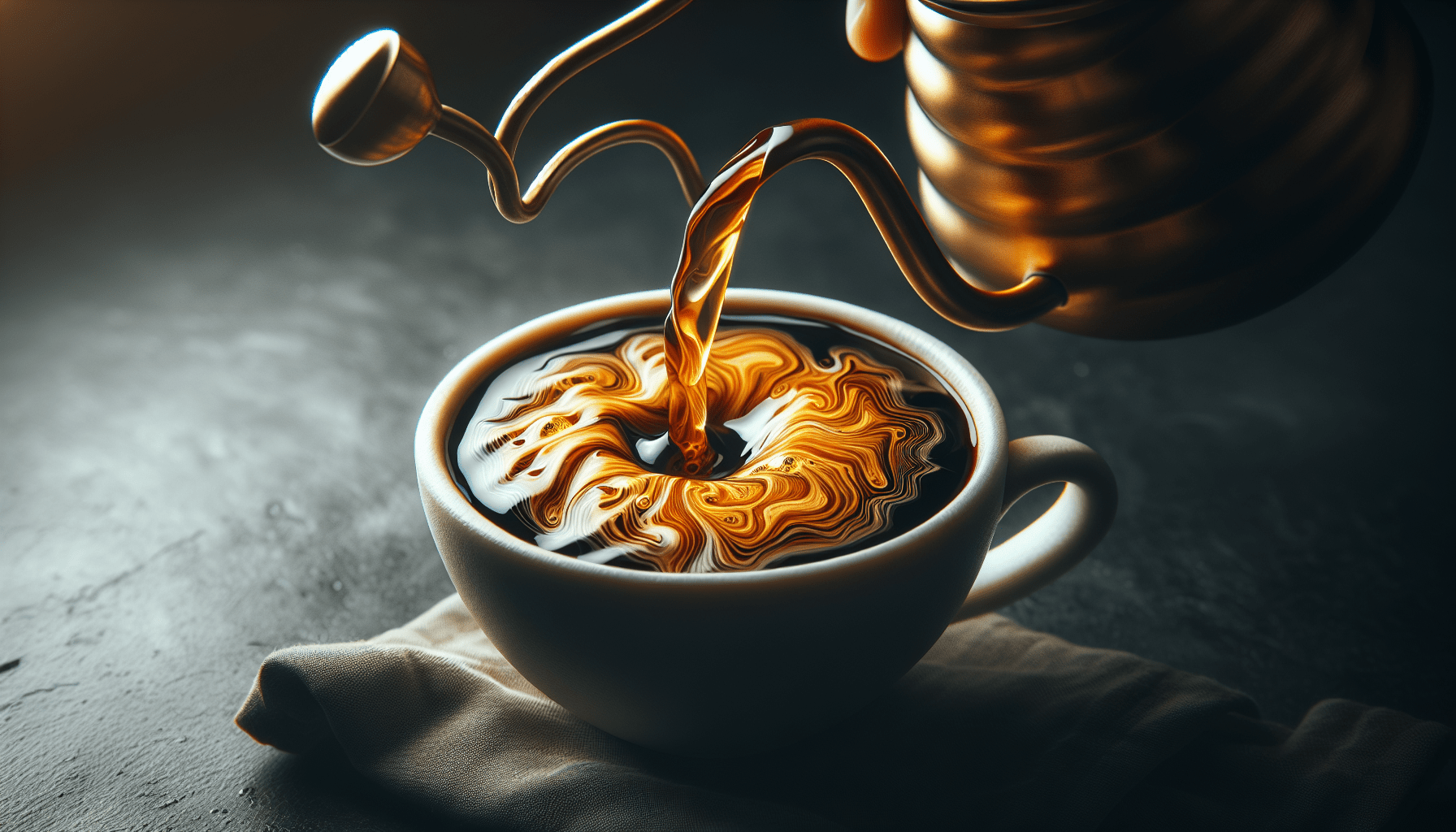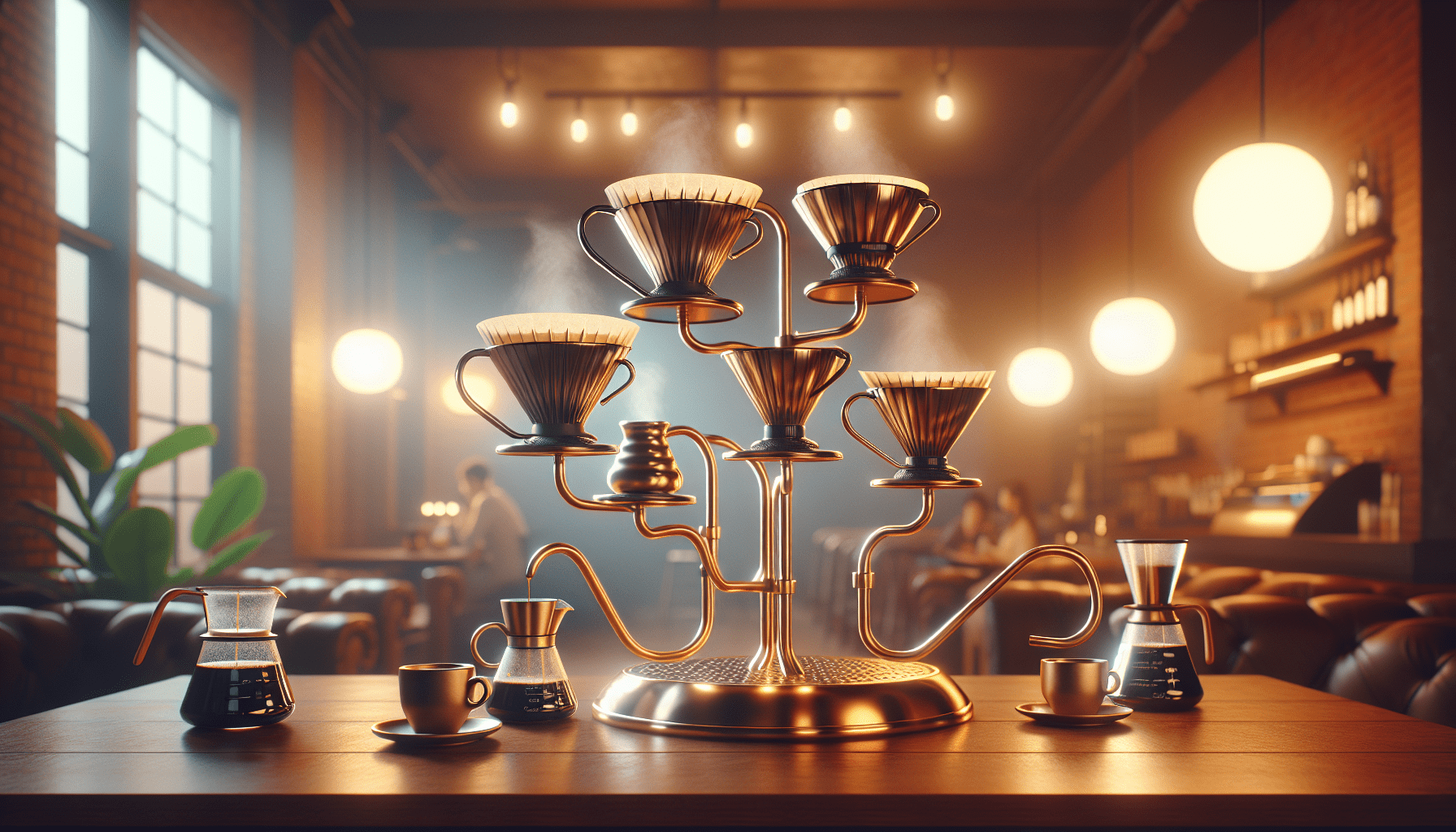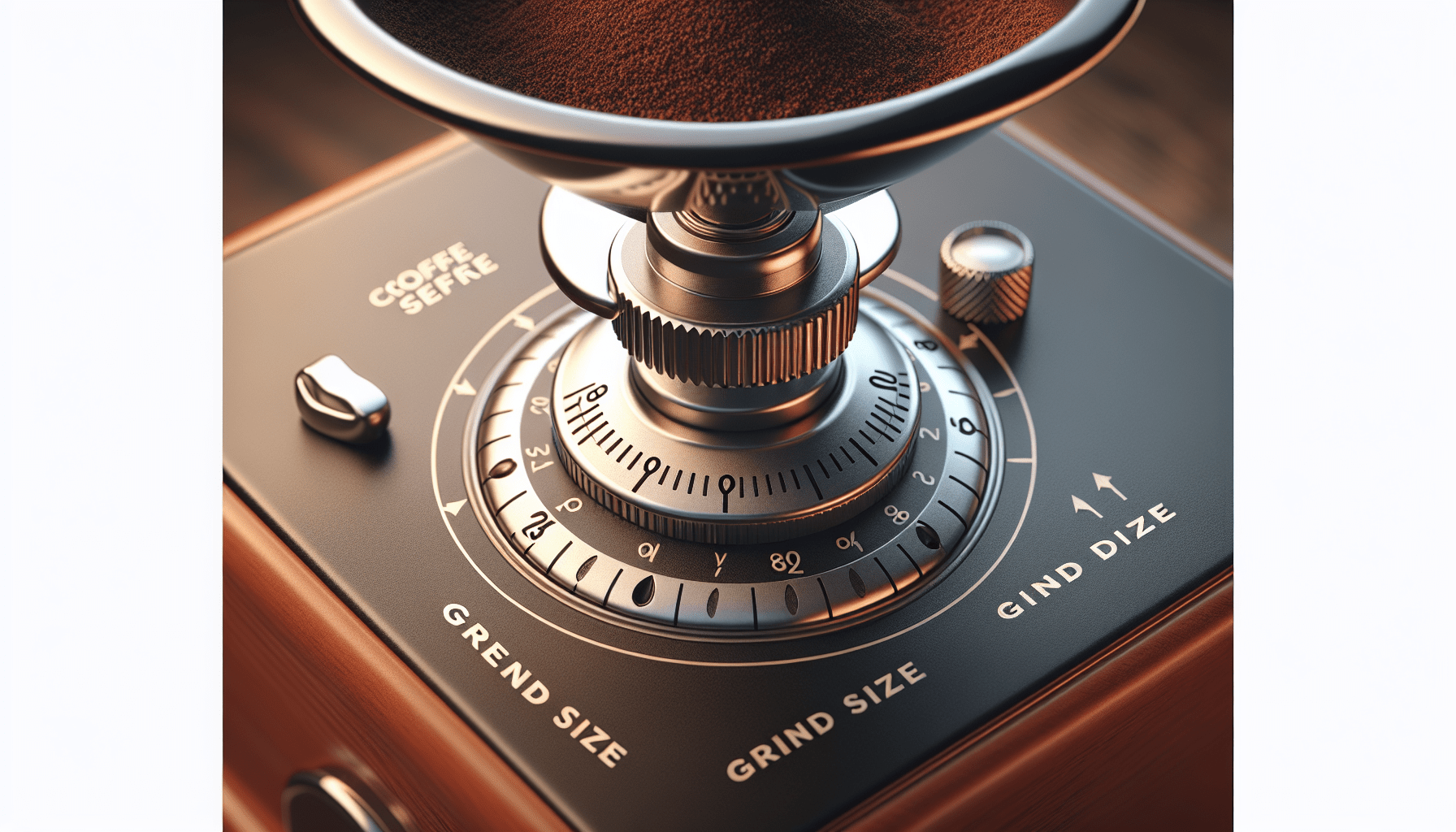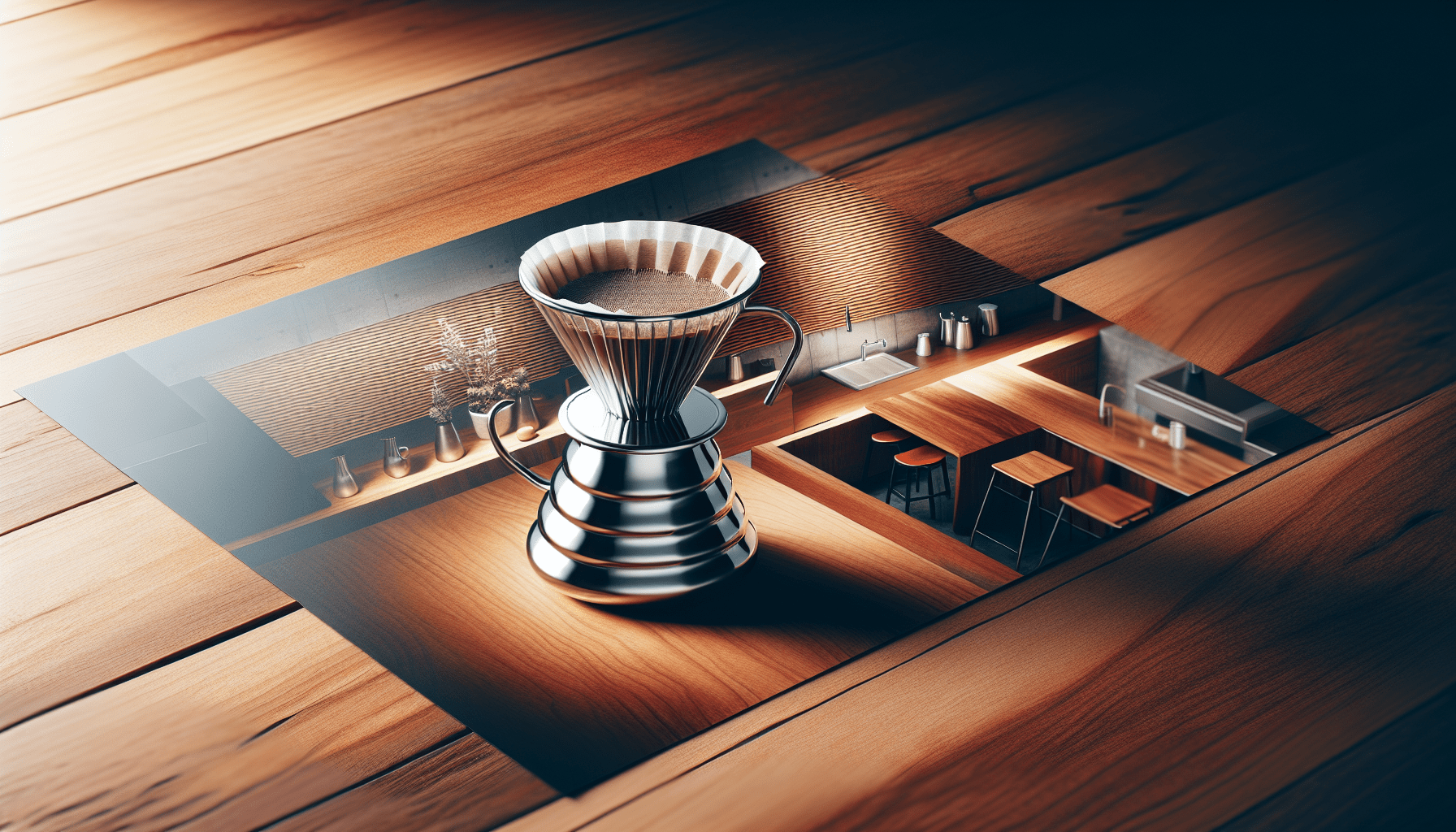Are you a coffee enthusiast who loves making pour-over coffee at home? If so, you might find yourself wondering how much coffee grounds you should use in your pour-over coffee maker to achieve the perfect brew. Finding the right balance between flavor and strength can be a bit of a mystery, but fear not! In this article, we’ll provide you with some helpful tips and guidelines to ensure that you’re brewing the best cup of pour-over coffee every single time. Say goodbye to weak or overpowering brews and get ready to elevate your coffee game!
Factors to Consider
When brewing coffee with a pour-over method, there are several factors you should consider to ensure you achieve the perfect cup every time. These factors include your coffee strength preference, the size of your coffee maker, brewing time, the type of coffee beans you use, and the grind size. By understanding and considering these factors, you can customize your brewing process to suit your taste preferences and achieve consistent results.
Coffee Strength Preference
One of the first factors to consider when brewing coffee is your personal preference for coffee strength. Some individuals enjoy a bold and intense coffee flavor, while others prefer a milder and more delicate taste. Determining your preferred coffee strength will guide you in adjusting the amount of coffee grounds to use in your pour-over coffee maker. Experimenting with different ratios of coffee to water will help you find the perfect strength that suits your palate.
Coffee Maker Size
The size of your pour-over coffee maker is another important factor to take into account. Different coffee makers have varying capacities, and the amount of coffee grounds you use should correspond to the size of the brewer. Using too little coffee in a large coffee maker may result in a weak and under-extracted cup, while using too much coffee in a small brewer can lead to over-extraction and bitterness. It is crucial to match the coffee maker size with the appropriate amount of coffee grounds for optimal results.
Brewing Time
The brewing time plays a significant role in the extraction process and ultimately influences the taste of your coffee. A longer brewing time generally extracts more flavor compounds from the coffee grounds, resulting in a stronger and potentially more bitter cup. Conversely, a shorter brewing time may produce a milder and less concentrated brew. Experimenting with different brewing times allows you to fine-tune the strength and flavor of your pour-over coffee.
Coffee Bean Type
The type of coffee beans you use will have a substantial impact on the flavor and strength of your brew. Different coffee beans possess distinct flavor profiles, ranging from fruity and acidic to chocolatey and nutty. It is important to choose beans that align with your taste preferences and pair well with the brewing method. Lighter roasted beans often have a more pronounced acidity, while darker roasts tend to be bolder and less acidic. Understanding the characteristics of your coffee beans will help you determine the optimal amount of grounds for your pour-over coffee maker.
Grind Size
Grind size is a crucial factor that affects the extraction process and the resulting flavor of your coffee. The grind size dictates how quickly the water extracts the desired compounds from the grounds. For pour-over brewing methods, a medium grind size is generally recommended. Finer grinds tend to increase extraction speed, resulting in a stronger and potentially over-extracted cup. Conversely, coarser grinds may under-extract, leading to a weaker and less flavorful brew. Adjusting the grind size allows you to control the strength of your coffee and achieve the desired balance of flavors.
General Guidelines for a Standard Strength Coffee
To achieve a standard strength coffee with a pour-over brewing method, there are a few general guidelines to follow.
Ratio of Coffee to Water
The most common ratio used for pour-over coffee is 1:16, which means one part coffee to sixteen parts water. This standard ratio provides a balanced and flavorful cup that is enjoyed by many coffee enthusiasts. However, it is important to note that this ratio can be adjusted according to your personal preference. Some individuals prefer a stronger brew and may choose to increase the amount of coffee grounds slightly. Similarly, if you prefer a milder cup, using slightly less coffee can achieve this. Experimenting with different ratios will allow you to find the perfect balance for your taste buds.
Calculating Coffee in Weight or Volume
When measuring the amount of coffee grounds, you have the option to use either weight or volume measurements. Weight measurements, such as grams or ounces, provide a more precise and consistent measurement. Using a digital kitchen scale ensures accurate results and allows for easy adjustment of the coffee-to-water ratio. However, if you don’t have a scale, volume measurements such as tablespoons or teaspoons can also be used. Keep in mind that the density of each coffee bean can vary, so volume measurements may not always be as precise. Using weight measurements is recommended for a more consistent brewing experience.
Specific Recommendations for Different Pour-over Coffee Makers
Different pour-over coffee makers have unique design elements that may require slight adjustments to achieve the best results. Here are some specific recommendations for popular pour-over coffee makers:
Chemex
The Chemex coffee maker is known for producing a clean and crisp cup of coffee. To achieve this, a medium-coarse grind size is recommended. The ideal coffee-to-water ratio is 1:15, as the Chemex filters produce a slightly slower flow rate. Aim for a brewing time of around 3-4 minutes. Experimenting with these variables will allow you to customize your Chemex brew to your taste preferences.
Hario V60
The Hario V60 is a versatile pour-over coffee maker that offers a wide range of brewing possibilities. It is generally recommended to use a medium grind size, allowing for a medium extraction speed. The coffee-to-water ratio can range from 1:15 to 1:17, depending on your desired strength. Adjusting the pouring technique can also influence the overall flavor profile. A steady and controlled pour is recommended for optimal results.
Kalita Wave
The Kalita Wave is renowned for its consistent extraction and balanced flavor. A medium grind size is recommended for this coffee maker. The coffee-to-water ratio for the Kalita Wave is typically 1:16, but it can be adjusted according to personal preference. The brewing time should be around 3-4 minutes, ensuring a well-extracted cup without over-extraction.
Bee House
The Bee House pour-over coffee maker is known for its simplicity and reliability. A medium-fine grind size works well with this brewer. The coffee-to-water ratio is similar to other pour-over methods, typically 1:16. Adjusting the brewing time can help fine-tune the strength and flavor of your Bee House coffee. Aim for a brewing time of 2-3 minutes.
Melitta
The Melitta pour-over coffee maker offers a straightforward brewing process. The recommended grind size is medium-fine, allowing for an optimal extraction. The coffee-to-water ratio for Melitta is typically 1:16, but it can be adjusted to suit your taste preferences. Experimenting with the brewing time can help you achieve the desired strength and flavor intensity.
Adjusting for Personal Taste Preferences
While the general guidelines and specific recommendations can provide a great starting point, it is essential to adjust your pour-over brewing process to match your personal taste preferences. There are a few key aspects you can fine-tune to customize your coffee to your liking.
Strength and Intensity
If you prefer a stronger and more intense cup of coffee, you can increase the ratio of coffee to water slightly. For example, instead of the standard 1:16 ratio, you can try using a ratio of 1:15 or 1:14. This adjustment will result in a bolder and more concentrated brew. Conversely, if you prefer a milder coffee, using a ratio of 1:17 or 1:18 will produce a lighter cup with less pronounced flavors.
Bitterness or Acidity
The level of bitterness or acidity in your coffee can also be adjusted to suit your taste preferences. If you find your coffee too bitter, consider using a coarser grind size or reducing the brewing time slightly. On the other hand, if you prefer a more acidic and vibrant cup, you can experiment with a finer grind size or longer brewing time. These adjustments impact the extraction process and can help you achieve the desired flavor profile.
Experimentation and Refinement
The beauty of pour-over brewing lies in the ability to experiment and refine your process over time. As you become more familiar with your coffee maker and the various variables involved, feel free to make adjustments and try different techniques. Keep track of your experiments and findings in a brewing journal, noting the specific measurements and brewing times used. With each adjustment and refinement, you will come closer to perfecting your ideal pour-over coffee.
Special Considerations
In addition to the factors mentioned earlier, certain special considerations can enhance your pour-over brewing experience and result in a better cup of coffee. These considerations include altitude and water temperature, extraction time and water pouring technique, and grind consistency and evenness.
Altitude and Water Temperature
If you are brewing coffee at a high altitude, you may need to adjust the water temperature and brewing time. Due to the lower boiling point of water at higher altitudes, the water temperature may be slightly lower than at sea level. Adjusting the water temperature by a few degrees or extending the brewing time can compensate for this and ensure proper extraction.
Extraction Time and Water Pouring Technique
The extraction time and water pouring technique used during the brewing process also influence the final taste of your coffee. A slow and controlled pour helps evenly saturate the coffee grounds, allowing for a more uniform extraction. Additionally, adjusting the pouring speed and pattern can impact the extraction rate and the resulting flavor profile. Experiment with different pouring techniques and times to find the method that produces coffee best suited to your preferences.
Grind Consistency and Evenness
To achieve optimal extraction, it is crucial to ensure a consistent and even grind size. Inconsistent grinding can lead to uneven extraction, resulting in a brew with both over-extracted and under-extracted flavors. Investing in a good grinder and ensuring your coffee grounds are of consistent size will significantly improve the quality and taste of your pour-over coffee.
Benefits of Using the Right Amount of Coffee Grounds
Using the correct amount of coffee grounds in your pour-over brewing process offers several benefits that contribute to a satisfying cup of coffee.
Richer Flavor Profile
Using the right amount of coffee grounds ensures that the water adequately extracts the desired flavors from the beans. By striking the perfect balance between the coffee and water ratio, you can enjoy a richer and more nuanced flavor profile in your cup.
Balanced Extraction
With precise measurements, you can achieve a balanced extraction, where the desirable flavors are extracted without causing bitterness or under-extraction. Consistently using the right amount of coffee grounds allows for a harmonious extraction of flavors and a well-rounded cup of coffee.
Consistency and Reproducibility
By following a standard coffee-to-water ratio and using accurate measurements, you can achieve consistency in your pour-over brewing process. Consistency ensures that you can reproduce your favorite cup of coffee time and time again, eliminating any guesswork and guaranteeing a consistently excellent brew.
Reduced Waste
Using the right amount of coffee grounds helps minimize waste. By accurately measuring and using only what is necessary, you can avoid excess grounds that may go to waste. Reducing waste is not only environmentally friendly but also more cost-effective in the long run.
Common Mistakes to Avoid
To achieve the best results with your pour-over brewing, it is important to avoid some common mistakes that can compromise the quality and taste of your coffee.
Using Inaccurate Measuring Tools
Using inaccurate measuring tools, such as using tablespoons instead of grams or ounces, can lead to inconsistent results. Volume measurements can vary depending on the density of the coffee grounds, leading to imprecise coffee-to-water ratios. Invest in a digital kitchen scale for more accurate and consistent measurements.
Improper Bloom
The bloom stage, where hot water is initially poured over the coffee grounds, is a crucial step in the pour-over brewing process. Failing to allow the coffee to bloom adequately can result in under-extraction and a weak flavor. Make sure to pour a small amount of hot water over the grounds to allow for proper degassing and blooming before continuing with the rest of the brewing process.
Under-extraction or Over-extraction
Under-extraction occurs when the water does not extract enough flavor compounds from the coffee grounds, resulting in a weak and lackluster cup. Over-extraction, on the other hand, happens when the water extracts too many compounds, resulting in a bitter and unpleasant taste. Finding the right balance between extraction time and coffee-to-water ratio is key to avoiding these issues.
Ignoring Personal Preference
While guidelines and recommendations are helpful, it is essential to prioritize your personal taste preferences. Don’t be afraid to experiment and make adjustments according to what you enjoy. Remember that the perfect cup of coffee is subjective, and finding your own ideal brewing method is part of the enjoyment of home brewing.
Tips and Tricks
To further enhance your pour-over brewing experience, here are some tips and tricks that can elevate the quality of your coffee.
Experiment with Ratios
Don’t be afraid to experiment with different coffee-to-water ratios to find the one that suits your taste preferences. Start with the recommended ratios and gradually adjust them based on your desired strength and flavor profile. Keep a brewing journal to track your experiments and record your favorite ratios.
Keep a Brewing Journal
Keeping a brewing journal is an excellent way to track your brewing process and note any adjustments and refinements you make. Record the coffee bean type, grind size, water temperature, pouring technique, and any other variables that may affect the outcome. This journal can serve as a valuable reference for future brews and help you replicate your best results.
Invest in a Good Grinder
Investing in a high-quality coffee grinder is essential for achieving consistent and even grind sizes. A burr grinder is generally recommended for pour-over brewing, as it produces a more uniform grind. Having control over grind consistency allows for better extraction and ultimately enhances the flavor of your coffee.
Learn from Online Resources
Take advantage of the wealth of knowledge available online. There are numerous coffee blogs, videos, and forums where you can learn about different pour-over techniques, brewing tips, and troubleshooting. Engage with the coffee community and explore various resources to expand your knowledge and enhance your brewing skills.
FAQs
Can I use the same ratio for all coffee beans?
While the general coffee-to-water ratios provided earlier serve as a good starting point, it is important to remember that different coffee beans have unique characteristics. Some beans may be more soluble than others or possess distinct flavor profiles. Experimentation is key in finding the right ratio for each type of coffee bean you use. Consider adjusting the ratio based on the roast level, bean origin, and flavor notes to achieve the best possible cup.
What if my pour-over coffee tastes weak or bitter?
If your pour-over coffee tastes weak, it could mean that the coffee-to-water ratio is too low, resulting in under-extraction. Try increasing the amount of coffee grounds or slightly reducing the amount of water. On the other hand, if your coffee tastes bitter, it may be over-extracted. Consider reducing the brewing time or adjusting the grind size to ensure a more balanced extraction.
How does grind size affect the coffee strength?
Grind size plays a significant role in controlling the extraction speed and coffee strength. Finer grinds offer a larger surface area, leading to a faster extraction and potentially a stronger brew. Coarser grinds, on the other hand, slow down the extraction process, resulting in a milder cup. Adjusting the grind size allows you to fine-tune the strength and flavor profile of your coffee.
Conclusion
Brewing coffee with a pour-over method offers a rewarding and customizable experience. By considering factors such as coffee strength preference, coffee maker size, brewing time, coffee bean type, and grind size, you can tailor your brewing process to suit your taste preferences. Following general guidelines and specific recommendations for pour-over coffee makers, adjusting for personal taste preferences, and considering special considerations like altitude and grind consistency, you can achieve a rich and flavorful cup of coffee. Avoid common mistakes, implement tips and tricks, and continue to explore and experiment to refine your pour-over brewing skills. With the right amount of coffee grounds and a thoughtful approach, you can enjoy a consistently excellent cup of pour-over coffee every time.




